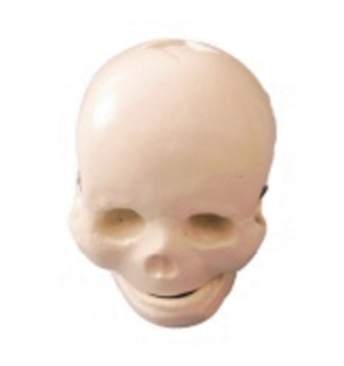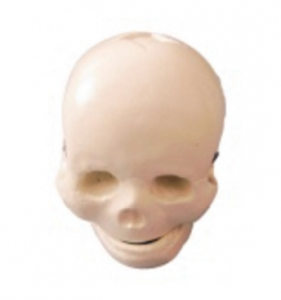In the broad field of medical training, the baby skull model undoubtedly plays a vital role, which is not only the physical display of anatomical knowledge, but also the "simulator" for medical personnel to improve practical skills. This model, with its high degree of simulation and interactivity, has brought revolutionary changes to medical training.
First, with its precise anatomy, it provides a near-real operating environment for medical personnel. Models are often crafted according to the proportions and characteristics of the newborn's skull, whether it is the position of the fontanel, the direction of the cranial suture, or the texture and density of the bone, and strive to match the real situation. This high degree of simulation allows the medical staff to feel similar touch and feedback when operating on the model as a real surgery or examination, thus deepening the understanding and memory of the baby's skull structure.

Secondly, the simulation function of the model is particularly outstanding in medical training. Medical professionals can perform a variety of simulation operations on the model, such as head examination, fontanel measurement, skull CT/MRI scan simulation, and even complex brain surgery simulation. These simulated operations can not only help the medical staff to familiarize and master the relevant skills, but also to practice repeatedly in a safe environment to improve the accuracy and proficiency of the operation. More importantly, through the simulation of actual combat scenarios, medical personnel can better cope with emergency situations and improve emergency handling ability and psychological quality.
In addition, it is highly interactive and flexible. Some advanced models are even equipped with intelligent sensing systems and teaching software that can provide real-time feedback and guidance based on the operation of the medical staff. This interactive design makes the medical training more lively and interesting, but also improves the training effect. Through the interaction with the model, medical staff can more deeply understand the anatomical structure and physiological function of the baby's skull, and master more clinical knowledge and skills.
In summary, as a "real combat" simulator in medical training, baby skull model has high application value and development potential. It can not only provide a highly simulated operating environment for medical personnel, but also help them improve their skill level and emergency response ability in real combat simulation. With the continuous progress of medical technology and the continuous development of medical education, it will certainly play a more important role in the future medical training.

